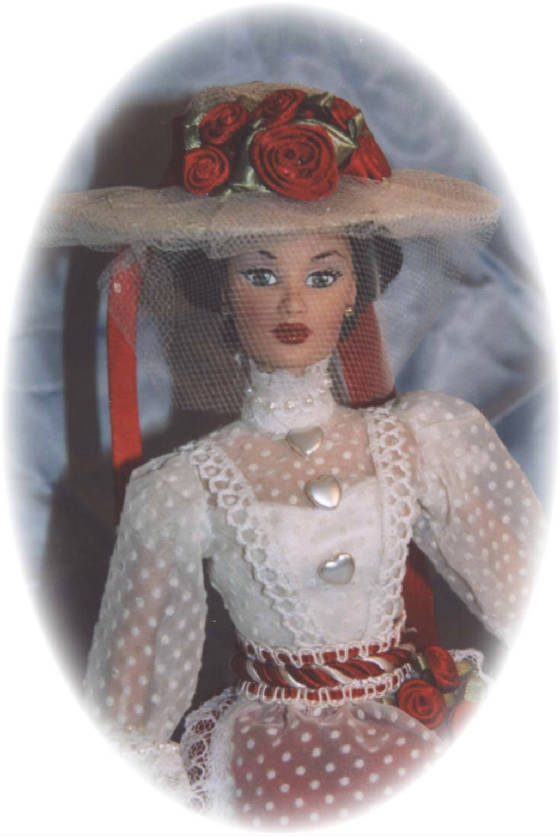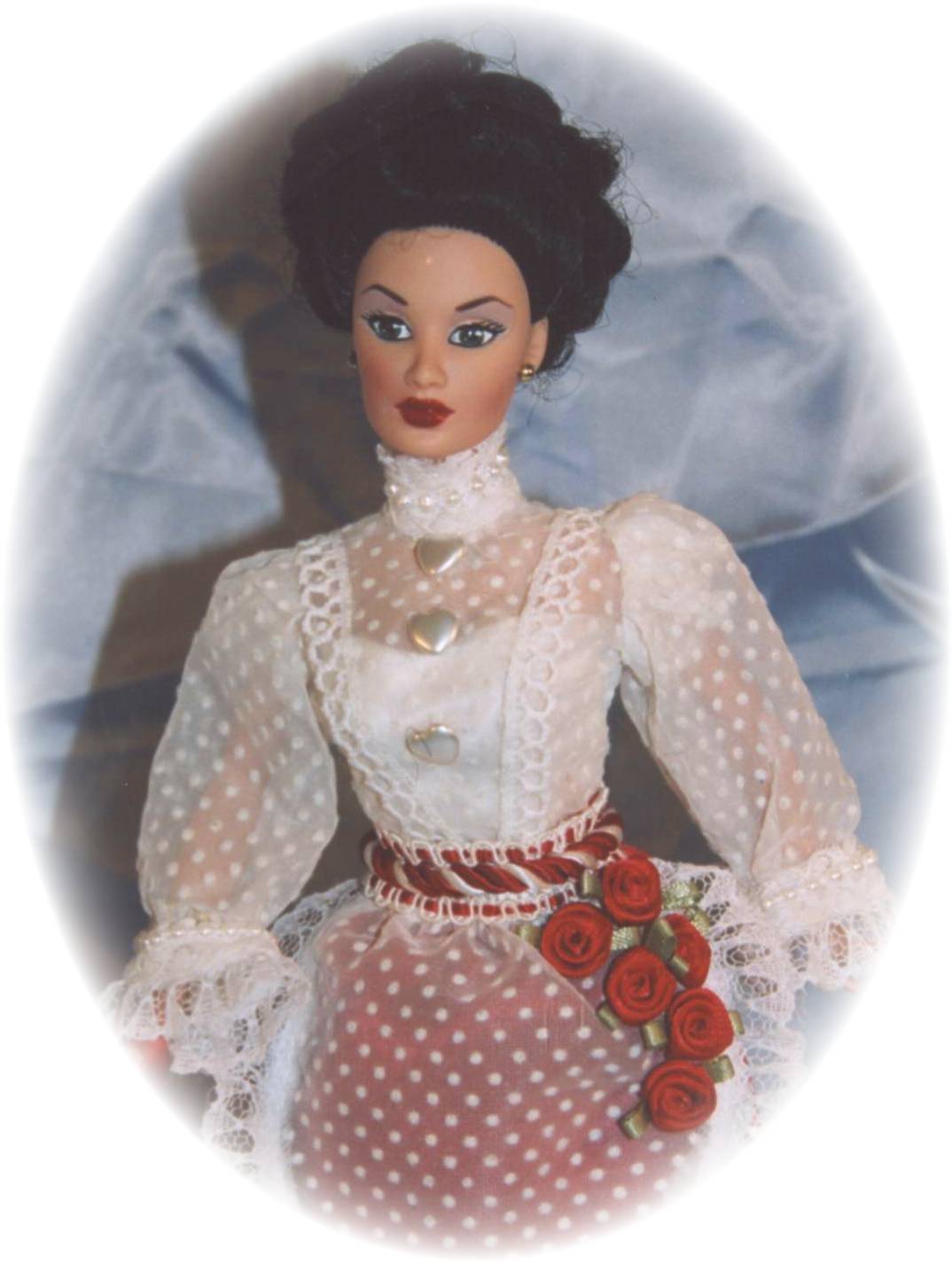|
Valentine Gibson Girl
|
|
Ladie Faire Doll Designs
|
||||||||||||
| Home | Medieval/Renaissance Designs | Antebellum "Belles" | Victorian and Edwardian Designs | Other Period Designs | Faerie/Fantasy Designs | ||||||||||||
|
Just spare one thought, One word for me, And say my Valentine you'll be.
|
||||||||||||
|
|
||||||||||||||||||||||||||||||||||
|
|
||||||||||||||||||||||||||||||||||
|
Valentine’s Day was a popular holiday throughout the Victorian period and into the turn of the 20th
century. People sent "penny postcards" to friends and loved ones during the period represented by this design (about 1890-1917),
and would collect them and display them in albums kept in the parlor—Valentine’s Day cards would have featured
prominently in such collections and many of these cards still exist and are collected today. As well as the ornately designed,
mass-produced lithographs, the turn of the century brought actual photographs into the card industry. Examples of both are
shown here.
|










